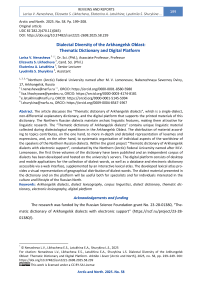Dialectal Diversity of the Arkhangelsk Oblast: Thematic Dictionary and Digital Platform
Автор: Nenasheva L.V., Likhacheva E.S., Latukhina E.A., Shurykina L.S.
Журнал: Arctic and North @arctic-and-north
Рубрика: Reviews and reports
Статья в выпуске: 58, 2025 года.
Бесплатный доступ
The article discusses the “Thematic dictionary of Arkhangelsk dialects”, which is a single-dialect, non-differential explanatory dictionary, and the digital platform that supports the printed materials of this dictionary. The Northern Russian dialects maintain archaic linguistic features, making them attractive for linguistic research. The “Thematic dictionary of Arkhangelsk dialects” contains unique linguistic material collected during dialectological expeditions in the Arkhangelsk Oblast. The distribution of material according to topics contributes, on the one hand, to more in-depth and detailed representation of lexemes and expressions, and, on the other hand, to systematic organization of individual aspects of the worldview of the speakers of the Northern Russian dialects. Within the grant project “Thematic dictionary of Arkhangelsk dialects with electronic support”, conducted by the Northern (Arctic) Federal University named after M.V. Lomonosov, the first three volumes of the dictionary have been published and an independent corpus of dialects has been developed and hosted on the university’s servers. The digital platform consists of desktop and mobile applications for the collection of dialect words, as well as a database and electronic dictionary accessible via a web interface, supplemented by an interactive lexical atlas. The developed lexical atlas provides a visual representation of geographical distribution of dialect words. The dialect material presented in the dictionary and on the platform will be useful both for specialists and for individuals interested in the culture and lifestyle of the Russian North.
Arkhangelsk dialects, dialect lexicography, corpus linguistics, dialect dictionary, thematic dictionary, electronic lexicography, digital platform
Короткий адрес: https://sciup.org/148330886
IDR: 148330886 | УДК: 81’282.2(470.11)(045) | DOI: 10.37482/issn2221-2698.2025.58.239
Текст научной статьи Dialectal Diversity of the Arkhangelsk Oblast: Thematic Dictionary and Digital Platform
DOI:
The research was funded by the Russian Science Foundation grant No. 23-28-01380, “Thematic dictionary of Arkhangelsk dialects with electronic support” .
In recent decades, philologists have repeatedly noted the special, unique position of the Northern Russian dialects in the dialect system of the Russian language. Being the “periphery” of the literary language, dialects preserve archaic linguistic features to a greater extent and resist innovations in it longer. Following this logic, the Northern Russian dialects can be considered a “periphery of the periphery”, as they, due to the territory of their existence, are too remote not only from the innovations of the literary language, but also from the interaction with other dialects; such remoteness contributes to the greater preservation of archaic linguistic features in them [1, p. 53]. In addition to data important for the history of the Russian language, the dialects of the Russian North also reflect the realities of everyday life and culture of its speakers, their perception of the world and human, their mythological and religious ideas. The linguistic picture of the speakers of these dialects has been formed for centuries by the remoteness of the northern territories, their special nature and the crafts developed there.
“Revealing” the picture of the world embedded in dialects is facilitated by recording the speech of their speakers and its further studying. Arkhangelsk dialects, in particular, need such research. Unique linguistic material collected during dialectological expeditions in the Arkhangelsk Oblast and currently stored in the card index of the Department of Russian Language and Speech Culture of NArFU allows us to compile a thematic dictionary of Arkhangelsk dialects. Distribution of material by topic contributes, on the one hand, to a deeper and more detailed presentation of lexemes and expressions united by a common theme, and, on the other hand, to reflection and systematization of separate large layers of the world picture of the speakers of Arkhangelsk dialects. Each issue of the dictionary is an attempt to carefully “collect” one of these large layers, which in the future should form the most complete (within the compilers’ capabilities) idea of the world picture of Arkhangelsk dialects. The dialect material presented in the dictionary can be useful for philologists, ethnographers, historians, local historians, museum workers, lecturers, teachers, as well as a wide range of people interested in the culture and life of the Russian North.
In the grant project “Thematic dictionary of Arkhangelsk dialects with electronic support”, in addition to creating the first issues of the dictionary (three issues have been published so far), an independent corpus dedicated to Arkhangelsk dialects was created, which is hosted on the university server; the dialect corpus website is available at The creation of the dictionary and dialect corpus dedicated to Arkhangelsk dialects was discussed in the article “Electronic Dictionary of Arkhangelsk Dialects” [2].
Thematic dictionary
“Thematic dictionary of Arkhangelsk dialects” includes dialect vocabulary arranged by thematic groups. The dictionary is planned to be published in several editions. The first edition of the dictionary “Clothes, shoes, headwear, accessories, fabrics” was published in 2023 (Fig. 1) [3], the second edition “Residential and household buildings and their parts” (Fig. 2) and the third edition
“Traditional northern dishes and drinks and methods of their cooking” (Fig. 3) were published in
2024 [4; 5].

Fig. 1. First edition.
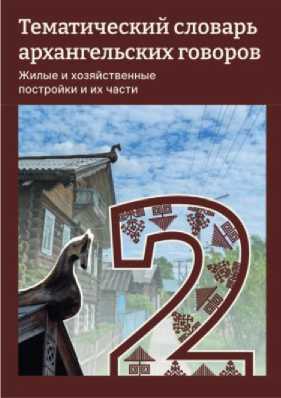
Fig. 2. Second edition.
Тематический словарь архангельских говоров Традиционные северные блюда и напитки и способы их приготовления
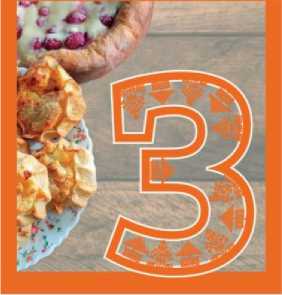
Fig. 3. Third edition 1 .
The cover design was made by the artist S.D. Ivanova.
“Thematic dictionary of Arkhangelsk dialects” refers to single-dialect explanatory dictionaries of a non-differential type [6]. In addition to the dialect words, the dictionary records some commonly used words related to these thematic groups, such as: jacket, shirt, alley, barn, crust, pie, sweet, cheese . Such words are included in the dictionary because they are still actively used in the speech of rural residents. However, the illustrative material shows that their use in dialects is often specific. Thus, the adjective сладкий [sweet] (as well as its derivative сладенький [sweetie]), in addition to its basic meaning in the literary language, acquires the meaning “delicious” in Arkhangelsk dialects: Всёгды́ мно́го ры́ бы-то бы́ ло, э́ки сла́дки бы́ ли. [There have always been a lot of fish, they were so sweet.]// Су́п сла́денькой, ка́ша сла́денькая. [Sweet soup, sweet porridge.] (Kargopolskiy district); at the same time, to express the main meaning, an adjective with a full-vowel root солодкий [sweet] can be used: Соло́дкий бо́льно ча́й де́лаешь. [You make tea too sweet.]// Соло́дка карто́шка в я́ме за́ зиму ста́ла, хо́лодно, вида́ть, в я́ме, ме́лка, неглу-бо́ка я́ма-то. [Potatoes in a root cellar have become sweet during the winter, it seems cold in a root cellar, it is shallow, it is not deep.] (Krasnoborskiy district)
The commonly used word сыр [cheese] is used in Arkhangelsk dialects in three meanings, none of which corresponds to the main meaning of this word in the literary language: СЫP [cheese], m. — 1. Cottage cheese . На́до сы́ р дави́ть [It’s time to press cheese] (Verkhnetoyemskiy district); Ра́ньше тво́рог сы́ ром зва́ли да. [Previously, cottage cheese was called cheese, yes.] // Со́чни пекли́, на и́x кла́ли сы́ р и́ли чё́-нибудь ишшо́, и ша́ньги получа́лись [They baked sochni [cottage cheese patty], they put cheese or something else on them, and they got shangi [type of pastries]] (Lenskiy district). 2. Food — cottage cheese, stewed in the oven and seasoned with sour cream, sugar or salt . Сы́ ра-то с молоко́м холо́дным хорошо́ пое́ли [We ate cheese and cold milk] (Vilegodskiy district); Накладут́ смета́ны, промеся́т, складу́т в ця́шу, поло́жат в пе́ць. Ка́к сы́ р испекё́цце, вы́ ймут и вы́ пружат из ча́ши на таре́лку [They will add sour cream, knead it, put it in a bowl, and put it in the oven. As the cheese is baked, they take it out of the bowl and put it on a plate] (Leshukonskiy district). 3. Curd Easter . Сла́дкий-то сы́ р де́лали на Па́сху всё́ [Sweet cheese was made for Easter by everyone] (Verkhnetoyemskiy district); К Па́схе сы́ р ка́жной го́д де́лали [Cheese was made for Easter every year] (Kholmogorskiy district).
The words in the dictionary are divided into thematic groups, and within each issue — into thematic subgroups. In the subgroups, the words are given in alphabetical order. In the first issue, the vocabulary naming clothes, shoes, headwear is divided by gender: vocabulary that names women’s clothing (shoes, headwear); vocabulary that names men’s clothing (shoes, headwear); a separate subgroup contains vocabulary that names clothes (shoes, headwear) worn by both men and women. This issue includes the groups “Bedclothes”, “Tablecloths, towels, napkins”.
The second issue contains a separate subgroup of words naming parts of a residential area; words naming outbuildings are divided into two subgroups, taking into account their location in relation to the house: words denoting outbuildings and places for livestock that are located under the same roof as the residential part of the house, for example, a shed, a stall, and outbuildings that are separate from the residential building, for example, a barn, a drying house [6]. A separate subgroup is made up of words naming a stove and its parts. The appendix to the second issue contains photographs of parts of a northern house, as well as schemes of a Russian stove and a northern peasant house in section, with parts of the stove and house indicated on the scheme.
The third issue of the “Thematic dictionary of Arkhangelsk dialects” consists of dialect vocabulary related to the group “Traditional Northern dishes and drinks”. Taking into account the fact that many names of dishes made from mushrooms and berries are derivatives of their names, the compilers of the dictionary considered it necessary to supplement the lexical-semantic group with thematic subgroups “Names of mushrooms” and “Names of berries”. In addition, the studied dialectological material allows us to single out a separate thematic group, which consists of vocabulary denoting food for livestock.
A dictionary entry consists of:
-
• heading word; it is given at the beginning of the dictionary entry;
-
• grammatical notes: the gender of nouns is indicated: м . — masculine, ж . — feminine, ср . — neuter; if the word is used in the plural, the note мн . is given; adjectives have gender endings; verbs have the form: сов . — perfective form, несов . — imperfective form; adverbs — нар .;
-
• interpretation of the meaning of the word or meanings, if the word is polysemantic; word meanings are indicated by Arabic numerals;
-
• examples of the use of the word;
-
• geographical information: only areas are indicated without specifying settlements [6].
The interpretation of the meaning of the word sometimes contains ethnographic (encyclopedic) descriptions that allow revealing the specifics of northern life, traditions, local products and dishes, the features of their cooking. For example, the adjective межо́ный refers to fish that is salted in a special way in the Plesetskiy district; the following explanation is used to characterize this salting: МЕЖОНЫЙ , ая, ое — Special salting (about fish). The fish is undersalted and kept warm or in the sun until its meat becomes loose, “ashy”, with a special smell. Rye fish pie with such fish is the first course for a festive table in the Plesetskiy district . Есь и межо́на ры́ ба, кото́ру помéньшо посоля́т да на со́лнце подё́ржат, дак он как пéпел дéлается. Люблю́ межо́ну ры́ бу. [There is also fish, which is lightly salted and exposed to the sun, so it becomes like ashes. I love such fish.]// Поди́-ко, ры́ ба-то межо́на, а ты не хо́чешь, попро́буй-ко [Come on, it's a mezhona-ya fish, but you don't want it, try it] (Plesetskiy district). The adverb ма́ком , which denotes a common way of eating food among speakers of Arkhangelsk dialects, also has the necessary explanation: MAКОМ , adv. — The way of eating food (usually fish, dishes with gravy) with hands — a piece of bread is dipped in gravy, and then a piece of fish is put on it and eaten . Трешшо́чку-то я ма́ком то́лько и ем, карто́шку отварю́ да ма́слица подолью́ [I eat cod only with hands, I boil potatoes and add some oil] (Mezenskiy district).
Often the specifics of the dish and the features of its cooking are explained by the informants and reflected in the contexts, the narrative of which in these cases is similar to the narrative of culinary recipes, for example: Окро́шку де́лаем: луќ у, яи́цко накро́шим да карто́шки варё́ной, смета́ны, квас — вот и всё [This is how we cook okroshka: we chop onions, eggs, boiled potatoes, add sour cream, kvass — that's all] (Verkhnetoyemskiy district).
Illustrative material showing how a dialect word functions in the language includes examples from dialect speech, which reflect vivid dialectal phenomena of Arkhangelsk dialects; the linguistic material is given in orthographical note, but with elements of transcription.
Digital platform: electronic corpus of Arkhangelsk dialects
For processing, analyzing and presenting dialect materials to a wide audience, a digital platform — an electronic corpus of Arkhangelsk dialects — has been developed. Additional components are being developed to make working with the corpus more convenient and efficient.
The digital system currently consists of the following components (Fig. 4):
-
• the desktop application “Word Bank”, which automates the collection and processing of dialect material and provides tools for dialect analysis (classification of dialect words by type) [7];
-
• the mobile application ArkhDialect, designed to collect dialect materials, can be used in the field;
-
• the desktop application “Scanner”, which allows converting scanned handwritten dialect materials into electronic form (under development);
-
• a server for data processing and storage, including:
-
• a web interface to organize moderation of added content;
-
• a database in which dialect material is stored;
-
• a dialect corpus in the form of a web service where materials from the database can be viewed in a convenient form.
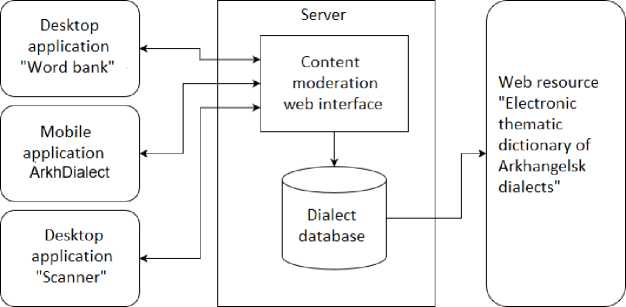
Fig. 4. Schematic diagram of the information system.
The schematic diagram of the information system is shown in Fig. 4. The dialect material is uploaded to the server using one of the three developed applications. Before a word or text enters the database and, consequently, the dialect corpus, it must be checked by an expert. Content moderation is carried out manually using the web interface. The web resource “Electronic themat- ic dictionary of Arkhangelsk dialects” provides free access to the materials uploaded to the dialect database [7].
The developed application “Word bank” was previously described in detail in [7].
The web interface allows finding the necessary words: either a specific word form, or words with specified characteristics, for example, related to a certain thematic group, used in a particular region or belonging to specific parts of speech (Fig. 5).
The found words can be sorted in direct or reverse alphabetical order, in direct or reverse order by thematic groups.

Fig. 5 “Electronic thematic dictionary of Arkhangelsk dialects”.
The electronic dictionary entries are presented in the form of dictionary cards. The word, its grammatical characteristics, and thematic group of the card are highlighted separately. The main section of the card contains the meaning of the word and examples, divided by districts.
|
БАШЛЫК м. |
Мужские головные уборы |
|
Зимний мужской головной убор с длинными ушами, завязываемыми назад |
|
|
Вйтёр-то тепляе в башлыкё-то. |
Ленек. |
|
Мужикй на головы зимой одевали башлыки. |
Устья н. |
|
Обычно далеко поедут, одевают башлыки. |
Шенк. |
|
Башлык-от наверх надевали на шапку, шобы ветром не дуло. |
Пинеж. |
Fig. 6. Dictionary card.
A dialect lexical atlas of the Arkhangelsk Oblast has been developed for visual clarity, where one can see the areal of a word from the dictionary (corpus) or compare the areals of several words.
Similar lexical atlases have been developed for other regions.
For example, in the linguo-geographical system “Dialect” [8], offered by the Izhevsk State Technical University in cooperation with the Udmurt State University, words that relate to the se- lected topic are placed on a map of the region. As an example, the placement of words united by the topic “wolf” on the map is presented (Fig. 7).
A similar system has been implemented by the Laboratory of Information Technologies for
Education at the Volgograd State Pedagogical University. The lexical atlas of the Volgograd Oblast
-
[9] is based on pre-designed question-maps. Each such map reflects, firstly, dialect words united
by a common theme (for example, “wild animals”); secondly, the areas in which these words are found. The areas of use are also marked on the regional map with special symbols (Fig. 8).

Якшур-Бодья
Октябрьский ^
• вОлк фволк • бирЮк
•сЕрыЙ
• вОлки
• хИщник
• сЕрый волк
Fig. 7. Map of the distribution of words related to the theme “wolf” in the linguo-geographical system “Dialect”.
Завьялове каменное
Легенда карты
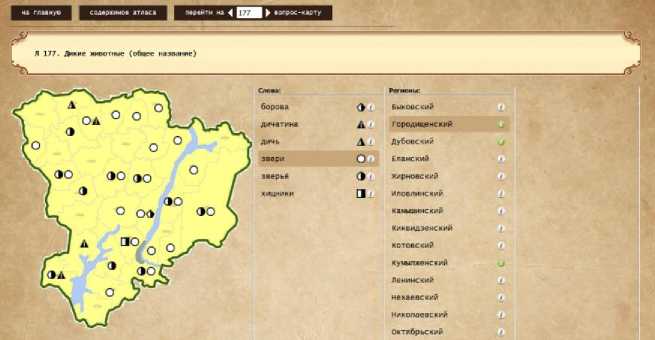
Fig. 8. Question map “Wild animals” in the lexical atlas of the Volgograd Oblast.
The options presented above demonstrate thematic design. In the thematic dictionary of Arkhangelsk dialects, voluminous thematic categories are highlighted, the words related to them are difficult to display on the map due to their number. Therefore, a different approach was used in developing the lexical atlas of the Arkhangelsk Oblast: a word or several words specified by the user are directly placed on the map (Fig. 9).
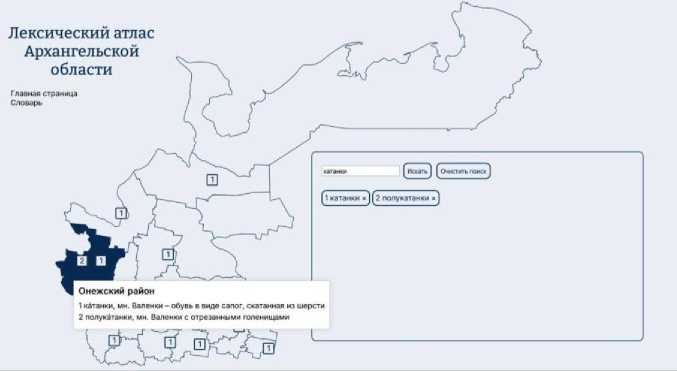
Fig. 9. Lexical atlas of the Arkhangelsk Oblast.
When putting the cursor over a particular district, the following information appears:
• the name of the district;
• a list of words requested by the user from those found in this district;
• their lexical meaning and grammatical characteristics.
For the convenience of working with the search, protection from incorrect input has been implemented. Entering Latin or non-alphabetic characters is prohibited, uppercase characters are automatically converted to lowercase. It is recommended to work with the atlas using a personal computer, since the full map may be too small on the screen of a mobile device.
Conclusion
The first several volumes of the multi-volume thematic dictionary of dialects of the Arkhangelsk Oblast were published as part of a project implemented at the Northern (Arctic) Federal University named after M.V. Lomonosov. On the basis of these materials, a dialect corpus was developed, which became the basis for an electronic dictionary that allows a wide range of readers to get access to dialect materials. An interactive lexical atlas was also developed, which displays the areas of use of different dialectisms and serves as a tool for analyzing the areas of distribution of dialect words.
The dialect corpus, filled with thematic dialect materials, will become a valuable resource for specialists engaged in the study of Russian folklore. Dialect materials, divided into thematic groups, will help in organizing museum and ethnographic activities, in works on social history and ethnography, in studies of folk costume and life. The research results can be used in educational projects introducing the richness of northern culture to the audience; in local history projects; in the preparation of cultural events dedicated to the language of the Russian North; in the teaching of Russian literature in universities and schools.

